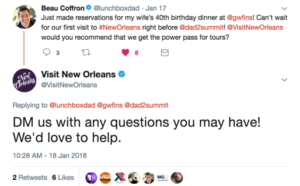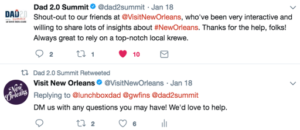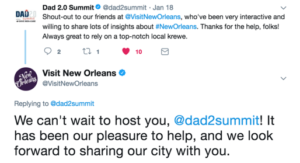
In a perfect world, your brand would be instantly recognizable – at a glance, consumers would associate your logo with your brand’s core values, the products or services your company offers, and the underlying functionality of those products and services.
Unfortunately, things don’t usually work that way. That’s why developing a brand voice is so important in the modern age of digital marketing.
Simply put, brand voice is the expression of your brand through words. Every time your company communicates with an audience – through an advertisement, email, press release, social media post, or public statement – your brand voice is front and center. The digital world is saturated with brands vying for consumers’ attention, and this means companies need to develop precisely crafted personalities to reach their target audiences.
This article will briefly explore 3 essential steps in creating and maintaining your brand’s voice: defining, consistency, and engagement. While not comprehensive, understanding these steps is a great start to developing a highly effective way of communicating with your target audience.
Defining
Let’s briefly outline some basic steps required in the development of a voice for your brand.
First, clearly define your company’s goals. As an example, we’ll use a company that has already established an audience and wants to expand its messaging to a wider client base: Sazerac Rye Whiskey.
Sazerac Rye Whiskey is a New Orleans liquor brand with national brand clout. However, Sazerac wants to increase its visibility and sales by tying themselves to the personality of New Orleans. Here are a few basic goals that allow Sazerac to begin the process of defining its brand voice:
- Get more people to drink Sazerac Rye Whiskey
- Connect Sazerac Rye Whiskey to New Orleans market
- Cross-generational messaging: “Not your grandpa’s Sazerac” – different decades drink the same whiskey, but in their own style.
Once your goals have been defined, crafting a brand voice that will speak to your target audience becomes much easier. In a sense, your goals tell you who will be listening to your message. This, in turn, dictates how you will speak to your audience.
Here is a brief example of the way in which Sazerac has defined its brand voice in order to accomplish its goals:
Tone
- Gender-neutral, trustworthy, jovial and lighthearted, but sharp-witted
Language
- Educated, but worldly. Straight to the point. A person of few, but purposeful words.
Purpose
- Educate on versatility of the product using persona to humanize and create relatable experiences.
One you’ve defined a brand voice, it’s time for implementation. Guidelines like the ones above will be the scaffolding of your brand’s personality, and they should be referenced constantly until they’re second nature.
Consistency
It’s important to stay on brand, or consistent in your messaging across all channels. Your style guide will allow you to conceptualize your brand as a singular personality – an individual voice with a unique set of goals, emotions, and ways of interacting with the world.
On any given day in the real world, we engage with a variety of social contexts, all of which present a different set of behavioral expectations. Over time, certain contexts become familiar, allowing us to better gauge social dynamics within each of those spaces. For example: you’ve probably learned that you shouldn’t speak to your boss the way that you speak to your best friend. Consumers interface with the digital marketplace in a similar way, expecting specific outcomes from their interactions with the brands they love.
Successful brand voices are consistent and relatively predictable; their interactions with an audience remain within the confines of a defined personality. This establishes credibility, reliability, and allows a message to stand out in the crowd of voices yelling for attention (and conversions).
Engagement
The culmination of all your hard work (where the rubber hits the road) is engagement. Engagement is nothing more than conversation with your audience. Every message to your audience – replies, direct messages, Instagram captions, calls to action, etc. – should effortlessly employ your brand voice. Here is an example that shows why engagement is so important, and the way that a simple conversation can heavily impact your brand:
Visit New Orleans (@VisitNewOrleans) is the official travel resource for the Crescent City. Due to diligent community management, Visit New Orleans’ audience has come to rely on them for a wide variety of information, from simple inquiries about weather conditions to entire travel itineraries.
A large conference called the Dad 2.0 Summit heavily promoted its 2018 conference taking place in New Orleans. Dad 2.0 is an annual gathering where marketers, social media leaders, and blogging parents connect to discuss the changing voice and perception of modern fatherhood, and its members are very active on Twitter. One simple piece of engagement with Dad 2.0 resulted in an impactful, mutually beneficial set of interactions for Visit New Orleans and the Dad 2.0 Summit.
Beau Coffron, a national influencer on parenting issues, reached out to Visit New Orleans with a simple inquiry regarding his trip:

Visit New Orleans publicly responded and then began a private conversation with Beau, but they were retweeted by the official Dad 2.0 Summit account along with a public shout-out:

Visit New Orleans directly engaged with the summit:

 So, in a matter of minutes, a brief conversation can lead to a highly visible set of interactions that builds goodwill with your target audience and publicizes your company’s services (at no cost!). Never pass up an opportunity to engage. With each interaction, you reinforce your brand’s personality and let consumers know what they can expect whenever they engage with you.
So, in a matter of minutes, a brief conversation can lead to a highly visible set of interactions that builds goodwill with your target audience and publicizes your company’s services (at no cost!). Never pass up an opportunity to engage. With each interaction, you reinforce your brand’s personality and let consumers know what they can expect whenever they engage with you.
Recap & Next Steps (Have Some Fun!)
Once you’ve started expressing your brand’s voice, take note of how your audience is reacting to it. It’s important to keep your finger on the pulse of your conversations and to remain adaptable to your audience’s needs, personalities, and methods of engagement. Every conversation, whether it’s digital or beyond your keyboard, requires tact and sensitivity.
Above all, be confident in your research and have a little fun – you’ve done the hard work, and now it’s time to let your brand voice shine!

